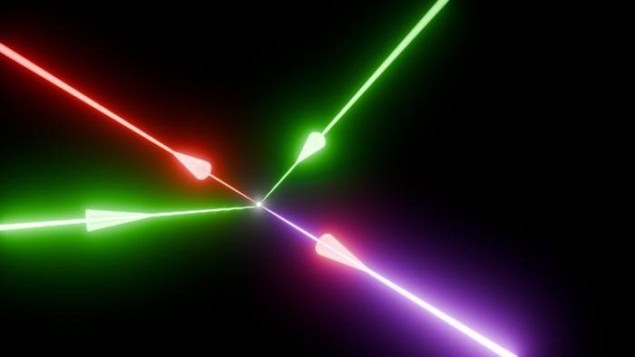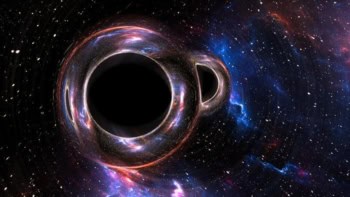
A computational paradigm that can accurately simulate interactions between powerful laser beams and quantum fluctuations in a vacuum has been unveiled by researchers in the UK and Portugal. Led by Lily Zhang at the University of Oxford, the team hopes that their solver could lead to important new insights into the quantum nature of the vacuum.
Quantum electrodynamics (QED) provides a detailed picture of how light and matter interact, and has withstood decades of experimental scrutiny. So far, however, evidence for one of the theory’s key predictions about the nature of the vacuum has remained elusive.
Far from being empty, the vacuum contains a sea of virtual particles that are associated with quantum fluctuations. These particle–antiparticle pairs spontaneously pop into existence before annihilating almost instantly.
QED predicts that virtual particles create nonlinearities within the vacuum that can interact with powerful laser pulses. Underlying this effect is photon–photon scattering, something that particle physicists have tried to observe for several decades in accelerator experiments.
Powerful lasers
“So far, there has been no successful direct tests of photon–photon scattering,” Zhang explains. “However, the global emergence of multi-petawatt lasers has rekindled interest in testing the vacuum using just light itself.” For these experiments to succeed, robust analytical tools which can model the quantum vacuum’s responses to such immensely powerful lasers will be crucial.
So far, researchers have used computational tools that can only model simplified laser setups using 2D models. Zhang’s team addressed these limitations using a numerical technique called the Yee scheme. This is used to solve Maxwell’s equations of electromagnetism and is already widely used in plasma simulation. The method works by separately calculating electric and magnetic fields at staggered times and positions, ensuring greater stability and accuracy.
“The key challenge here is the nonlinear terms, which depend on the electromagnetic fields themselves,” Zhang explains. “We addressed this by combining the Yee scheme with an iterative loop that updates the nonlinear response at each time step until the solution converges.” Once integrated with a state-of-the-art plasma simulation code, the team was left with a fully 3D solver, capable of simulating arbitrary laser interactions within a vacuum.
To test their platform’s performance, they benchmarked it against existing theoretical predictions of vacuum birefringence, which is an effect triggered when a vacuum is distorted by and intense laser pulse that “pumps” the vacuum. In the context of photon–photon scattering, QED predicts that that these distortions will cause the light in a weaker probe beam to split into two separate rays, each with a different polarization and refractive index.
In addition, the team extended their solver to modelling four-wave mixing, which is a more complex effect whereby three input light beams interact in a vacuum to generate a fourth beam.
Tracking asymmetries
“The real-time simulation capability allowed us to track the evolving properties of this output signal, including its size, intensity, and duration, and link these to physical conditions at earlier stages of the interaction,” Zhang explains. “For instance, asymmetries in the signal beam were traced back to asymmetries in the interaction region, which is clearly observable from the simulation data.”

Quantum fluctuations are controlled for the first time, say optics researchers
Just as the team hoped, their simulations of birefringence and four-wave mixing both closely matched their theoretical predictions – clearly showcasing their platform’s advanced capabilities.
For now, Zhang and colleagues hope that their solver could vastly reduce the computing resources required to develop robust 3D simulations of laser–vacuum interactions, making them far more efficient and accessible in turn. With its high flexibility in simulating arbitrary laser configurations, the team is now confident that their platform could soon be used to studying a diverse array of quantum vacuum effects – including birefringence, four-wave mixing, and many others.
“Looking ahead, we’re using the solver to explore new regimes, including novel beam profiles and exotic field interactions,” Zhang says. “Its structure also allows for easy extension to other nonlinear theories, such as Born–Infeld electrodynamics and axion-like particle fields. Ultimately, our goal is to create a versatile simulation platform for probing fundamental physics in the quantum vacuum.”
The research is described in Communications Physics.



